
Roots
To journey into the common practice of hair straightening among those with textured hair, we must first wander back through the corridors of time, where ancestral whispers still linger in the very coil of a strand. It is a story etched not merely in the annals of beauty, but in the deeper chronicles of human experience, cultural survival, and societal pressure. For Black and mixed-race communities, hair has always been more than mere adornment; it is a profound declaration of identity, a living lineage of heritage, and a silent witness to history’s ebb and flow.
The decision to straighten hair, seemingly a simple act of styling, carries layers of meaning, often born from intricate dances between external forces and internal resilience. It is a dialogue that has unfolded over centuries, a testament to adaptation and persistence in a world that frequently sought to diminish that which was inherently, beautifully, different.
Before the transatlantic slave trade cast its long, devastating shadow, hair in African societies communicated an entire lexicon of meaning. Styles spoke of one’s geographic origin, marital status, age, and even spiritual affiliations. Intricate braids, twists, and locs were not just aesthetic choices; they were living archives, telling stories of tribe, wealth, and social rank. Time spent on hair care was a cherished communal ritual, fostering bonds and passing down knowledge (BLAM UK CIC, 2022).
This profound connection to hair as a marker of identity was brutally severed by enslavement. Slave traders often shaved the heads of captives, an act intended to strip them of their African identity and humanity (BLAM UK CIC, 2022). The enslaved, disconnected from their traditional tools and practices, often found their hair becoming matted and tangled, leading to it being hidden under scarves (What Every Dermatologist Must Know About the History of Black Hair, 2023). This enforced neglect began a damaging narrative, where tightly coiled hair was pathologized, viewed as “unruly” or “unclean” by European colonizers who classified it as closer to fur or wool than human hair (Halo Collective, 2024).

Hair Anatomy And Physiology Of Textured Hair
The distinct nature of textured hair, particularly coils and kinks, springs from its unique follicular structure. Unlike straight or wavy strands, tightly curled hair often possesses an elliptical cross-section and grows in a helical or spiral pattern directly from a curved follicle. This curvature causes the cuticle layers, the protective scales on the hair shaft, to lie less flat.
The natural bends and turns along the strand also create more points of vulnerability, where the hair is prone to breakage. It is this biological blueprint that gives textured hair its incredible versatility and visual depth, allowing it to defy gravity and hold elaborate styles that other hair types cannot.
Historically, this elemental biology, though not understood in scientific terms, was recognized and celebrated within African ancestral practices. Care rituals were designed to work with the hair’s natural inclinations. Oils and butters, gathered from indigenous plants, were applied to maintain pliability and moisture, compensating for the hair’s natural tendency towards dryness due to its coiled structure limiting the natural oils’ descent down the shaft.
Combs carved from wood or bone, often with wider teeth, were fashioned to navigate the intricate curls without undue stress, reflecting an intuitive understanding of the hair’s need for gentle manipulation (Assendelft, 2023). These tools and practices were not about altering the hair’s fundamental nature, but about enhancing its inherent health and beauty within its natural state.
Ancestral care practices recognized the unique biology of textured hair, seeking to nourish and work with its natural form rather than alter it.
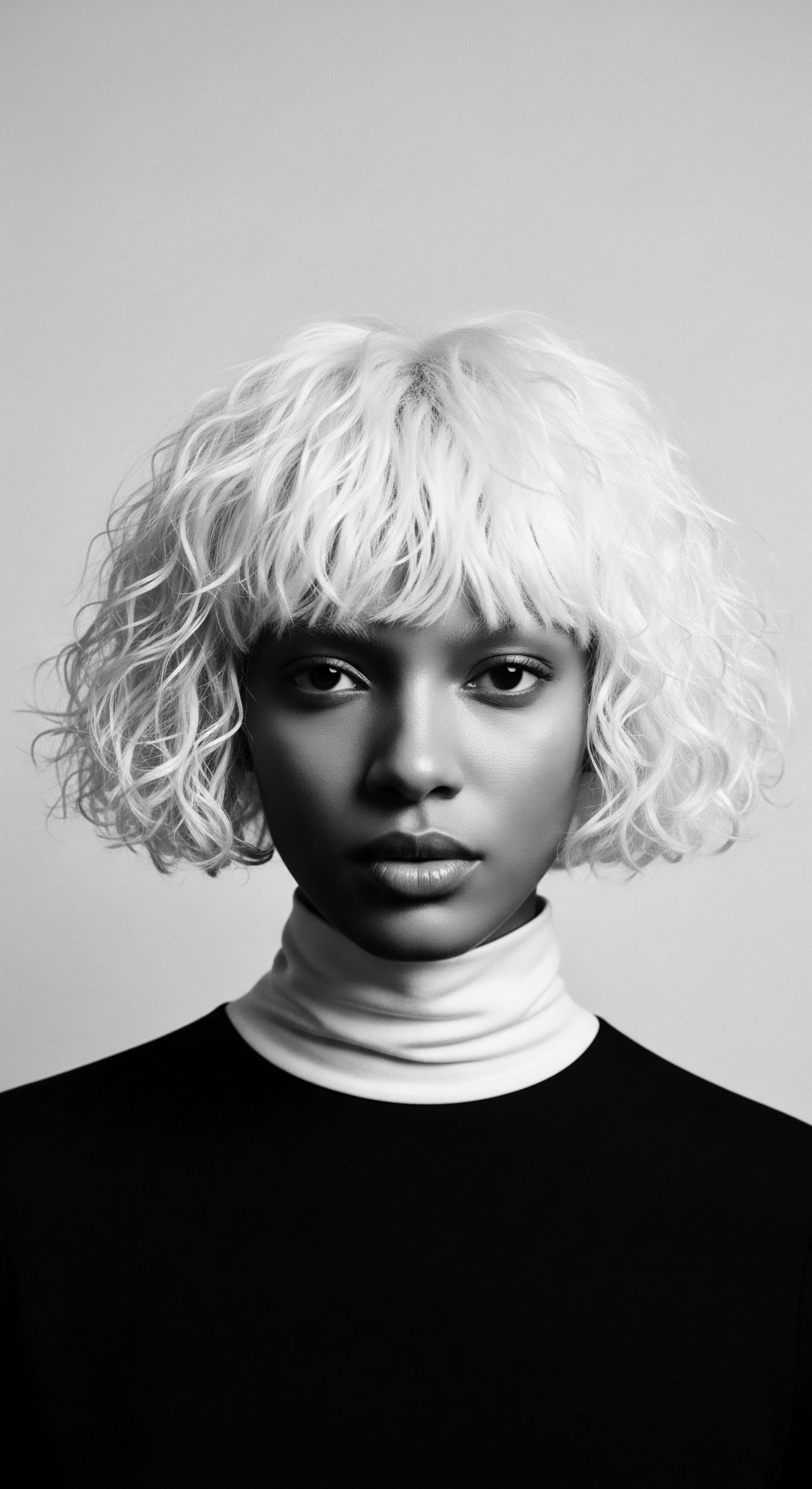
Shifting Classifications And Their Cultural Origins
The forced devaluing of textured hair during slavery established a hierarchy rooted in European beauty standards, creating a societal preference for straighter hair (Halo Collective, 2024). This shift gave rise to terms like “good hair” for straighter textures and “bad hair” for kinkier or curlier ones, reflecting an imposed system of value (What Every Dermatologist Must Know About the History of Black Hair, 2023). This introduced the complex internal dynamic of texturism within Black communities, where proximity to European hair types often correlated with perceived social standing and economic opportunity (What Every Dermatologist Must Know About the History of Black Hair, 2023).
This historical imposition of a beauty hierarchy helps us comprehend the pervasive influence of external pressures on textured hair styling choices. The drive to straighten hair became, for many, a means of survival and social mobility in a society that penalized natural Afro-textured appearances. It became entangled with the pursuit of acceptance, respectability, and even physical safety (Library of Congress, 2022).
The “comb test,” a stark example, was used post-emancipation to determine access to clubs or churches based on whether one’s hair could be easily combed (WhiteLotusHairStudio, 2022). Similarly, in Apartheid South Africa, “The Pencil Test” classified individuals racially based on whether a pencil stayed in their hair, underscoring hair texture’s role in systems of oppression (Halo Collective, 2024).
- Tignon Laws ❉ Enacted in 18th-century New Orleans, these laws forced free Creole women of color to cover their elaborate hairstyles with headwraps, aiming to suppress their visibility and signify their subordinate status to white women (JSTOR Daily, 2019).
- Comb Test ❉ A post-emancipation barrier, where an organization might hang a fine-tooth comb, indicating that those whose hair could not be easily combed were not welcome (Halo Collective, 2024).
- The Pencil Test ❉ A method used during Apartheid in South Africa to classify individuals racially; if a pencil placed in one’s hair did not fall out when the head was shaken, it indicated a hair texture associated with Blackness (Halo Collective, 2024).
These discriminatory practices reveal the extent to which straightened hair was, for many, a deeply pragmatic decision. It represented a compromise, a shield against overt discrimination, and a pathway to opportunities otherwise denied. This understanding does not diminish the beauty of natural hair, nor does it excuse the systemic racism that necessitated such choices. It simply broadens our perspective on a complex historical reality.
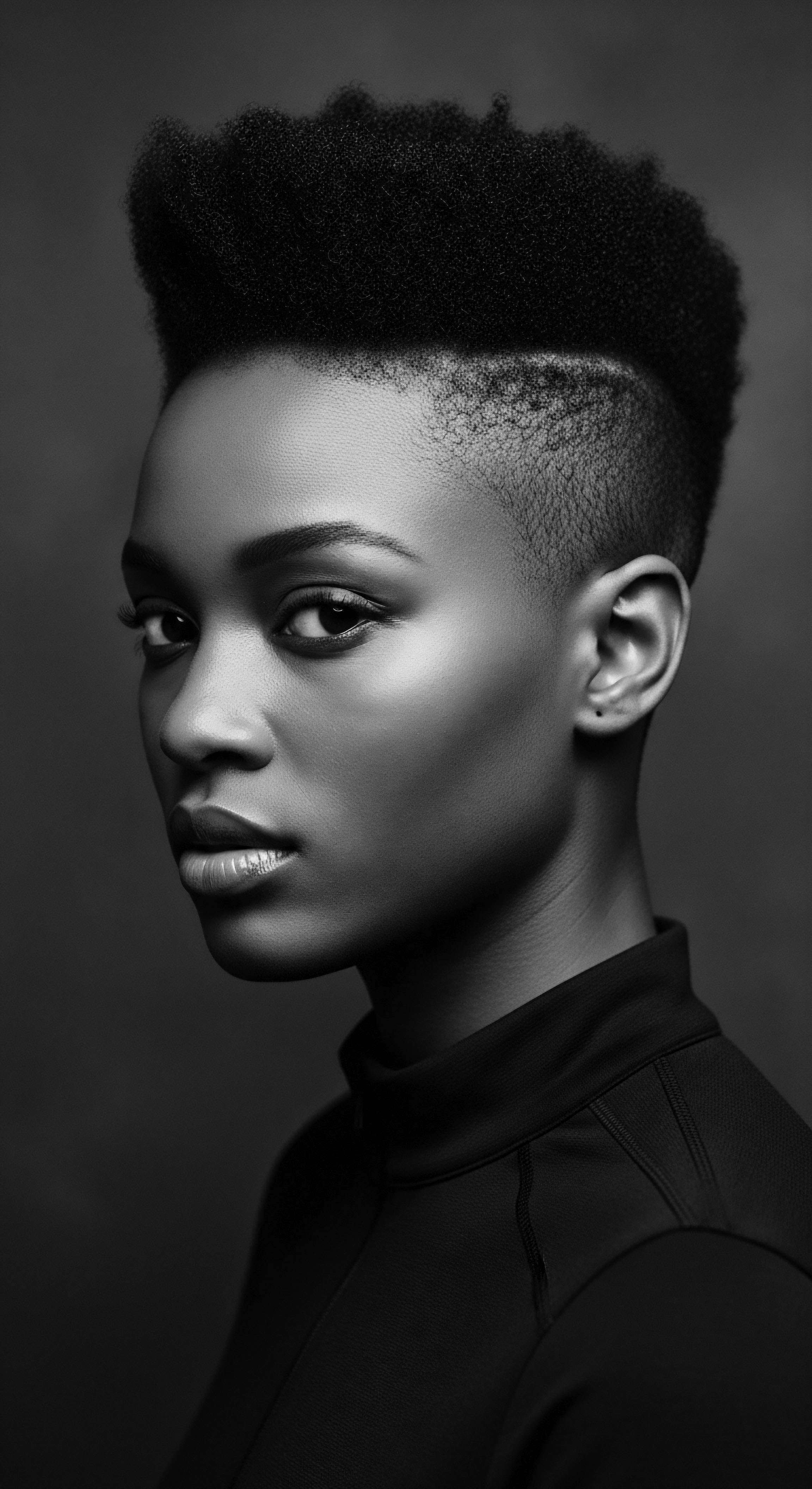
Ritual
The ritual of hair straightening, whether through heat or chemical means, became a profound act within Black communities, not just a simple grooming choice. It evolved from rudimentary methods to a sophisticated industry, each step reflecting societal pressures, economic aspirations, and a complex relationship with heritage. This history is not linear, marked by steady progress, but rather a spiraling dance of adaptation, innovation, and occasional reclamation. The tools and techniques employed speak volumes about resilience and the relentless pursuit of self-expression in the face of imposed standards.
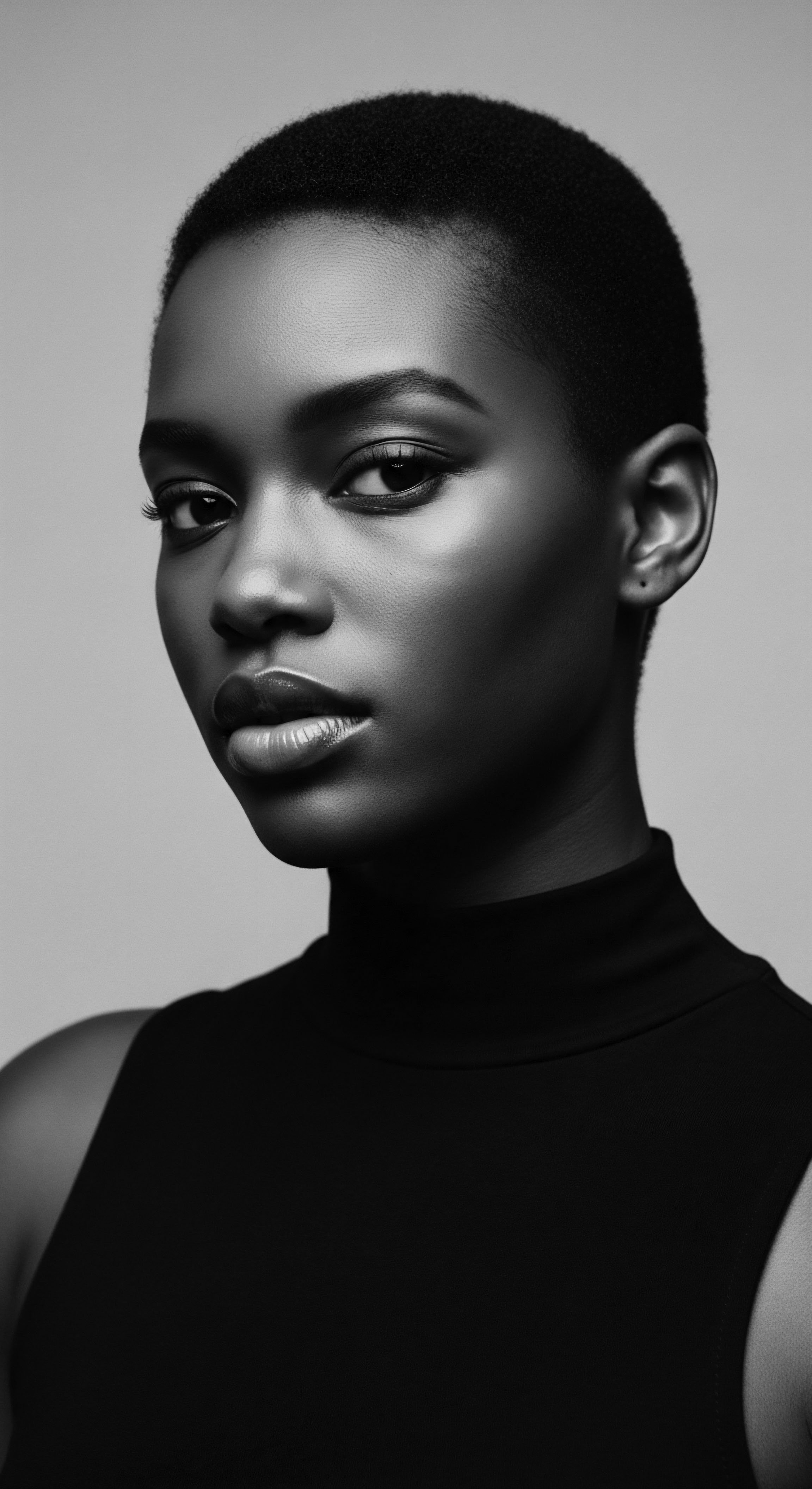
What Did Early Hair Straightening Practices Look Like?
Long before the advent of modern chemical solutions, hair straightening was a laborious and often risky affair, relying on rudimentary heated tools. In the 19th century, some Black women straightened their hair using metal tools heated on a stove (DHgate, 2023). These early proto-thermal combs were precursors to what would become known as the hot comb or pressing comb.
The practice involved heating a metal comb, often over an open flame or stove, then carefully pulling it through conditioned hair. The distinctive sizzle and smoky aroma often accompanied these Sunday rituals, as families gathered for hair dressing sessions that were as much about communal bonding as they were about styling (Library of Congress, 2022).
The hot comb gained significant popularity, particularly in the early 20th century. While its invention is credited to Frenchman Marcel Grateau in the late 1800s, who developed heated irons to style European hair, its widespread adoption and popularization within the African American community owe much to pioneers like Annie Turnbo Malone and her protégé, Madam C.J. Walker (DHgate, 2023), (The Trini Gee, 2023).
Walker, through her innovative marketing and training of “hair culturists,” integrated the hot comb into a comprehensive system of hair care products designed for Black women. Her hot combs, often featuring wider teeth, were used alongside pomades and shampoos to minimize heat damage and promote hair health (The Trini Gee, 2023).
| Era / Method Ancient Egypt |
| Characteristics / Cultural Context Early traces of hair relaxing, using alkaline substances for smoother textures, often linked to social status (Noireônaturel, 2023). |
| Era / Method 1800s Post-Slavery |
| Characteristics / Cultural Context Rudimentary heating methods, such as ironing or pulling hair, and natural but often harsh substances like kerosene, butter, or bacon grease were used to achieve straighter styles (Noireônaturel, 2023), (Library of Congress, 2022). This period saw increasing pressure to conform to Eurocentric aesthetics for social and economic acceptance (Halo Collective, 2024). |
| Era / Method Early 1900s Hot Comb Era |
| Characteristics / Cultural Context The widespread adoption of heated metal combs, popularized by figures like Annie Turnbo Malone and Madam C.J. Walker, for thermal hair pressing. This era marked the rise of a Black-owned beauty industry providing services and products tailored to Black women's hair needs, though still largely aimed at achieving straightness (The Trini Gee, 2023), (JSTOR Daily, 2019). |
| Era / Method The journey of hair straightening methods reflects a complex interplay of practicality, innovation, and deeply ingrained societal pressures influencing Black hair heritage. |

How Did Hair Straightening Shift From Home To Professional Settings?
The transition from home-based hair rituals to professional salon services marked a significant shift in the cultural landscape of textured hair care. Early Black beauty salons, often extensions of entrepreneurial women’s homes, became vital community hubs. They offered not only styling services but also safe spaces for social interaction, economic opportunity, and the exchange of cultural knowledge (WhiteLotusHairStudio, 2022).
Annie Turnbo Malone, for example, founded Poro College in 1918 in St. Louis, a premier cosmetology school that trained thousands of Black women not only in hair styling but also in business and marketing skills (TRU-Balance Hair Care, 2025), (Annie Malone and Madam C.J. Walker, 2017). These “Poro agents” spread her products and techniques across the country, creating a network of Black women entrepreneurs.
Madam C.J. Walker’s Lelia College similarly trained “hair culturists,” building an empire that addressed the hair care needs of Black women and offered avenues for economic independence (Annie Malone and Madam C.J. Walker, 2017).
The introduction of chemical relaxers, first developed by Garrett Augustus Morgan in 1909, introduced a more permanent method of straightening (Wikipedia, 2023). These early lye-based formulas provided a lasting alteration to the hair’s structure, allowing for easier maintenance of straight styles (The Commonwealth Times, 2011). While initially marketed to both men and women, relaxers became predominantly used by Black women seeking to conform to dominant beauty standards (The Commonwealth Times, 2011).
The rise of Black-owned beauty enterprises transformed hair straightening into a widespread cultural practice, simultaneously offering economic empowerment and contributing to the perpetuation of Eurocentric beauty ideals.
The prevalence of chemical relaxers grew significantly in the mid-20th century, with companies like Johnson Products introducing innovative formulas, such as the Ultra Sheen No-Base relaxer in 1965, which included a cream to shield the scalp from burns (Hair Relaxers, Cancer Risks and Black Women’s Health, 2024). The widespread adoption of these products meant that, for many generations, relaxed hair became the norm within Black communities, often seen as a necessary step for social acceptance and professional advancement (The Commonwealth Times, 2011), (Noireônaturel, 2023).
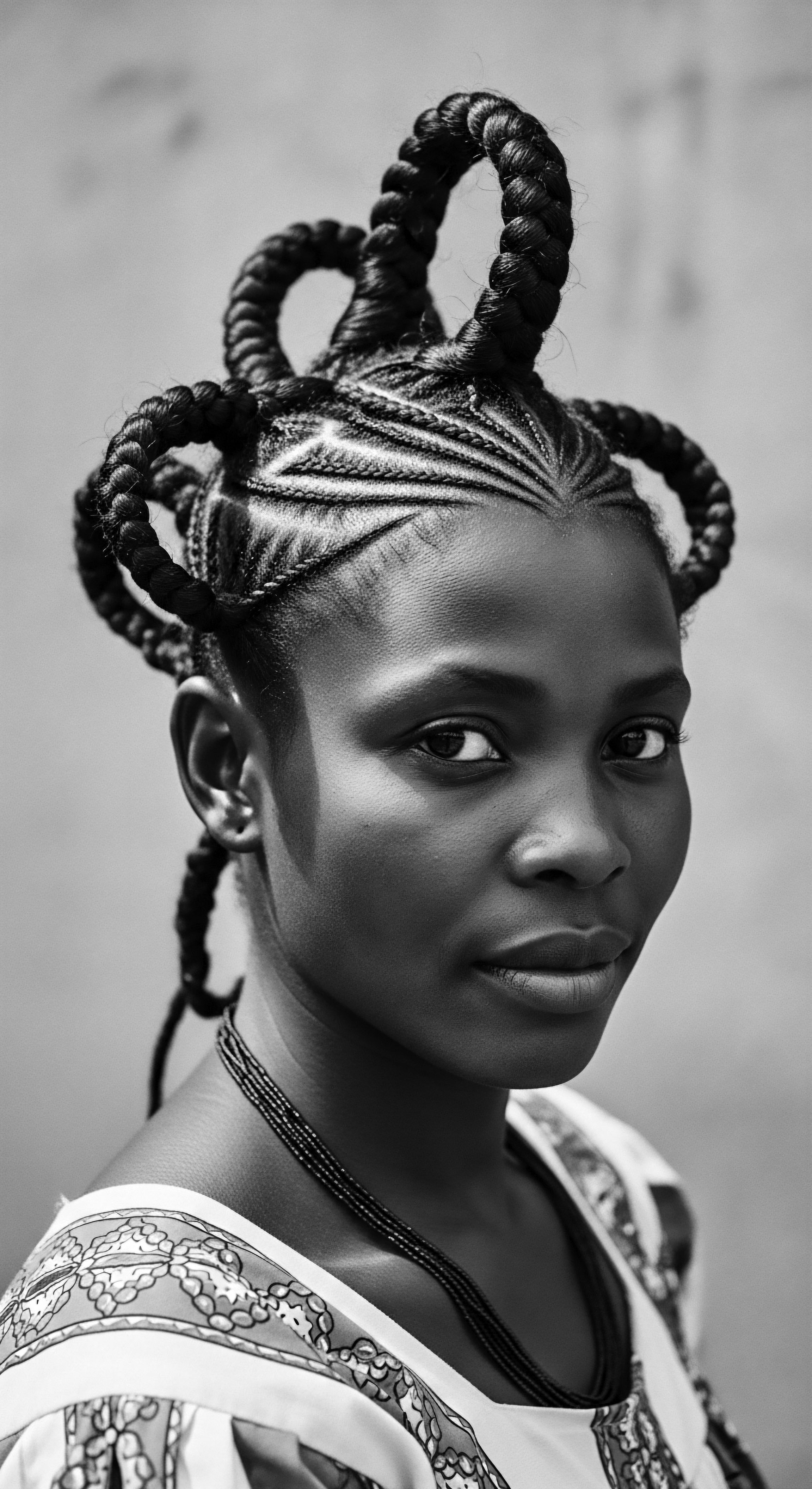
Relay
The story of textured hair straightening is a testament to the layered interplay of culture, commerce, and identity, particularly for Black and mixed-race communities. It reveals how practices born of societal pressure became deeply embedded in the fabric of daily life, influencing perceptions of self and opportunity. The journey from ancestral hair veneration to widespread straightening reflects not an abandonment of heritage, but a complex navigation of challenging circumstances.

What Were The Socioeconomic Drivers Behind Straightening?
The persistent adoption of hair straightening among Black women in the 20th century must be understood through the lens of socioeconomic pressures. Post-emancipation, Black Americans faced immense pressure to assimilate into a Eurocentric society to secure economic opportunities and social acceptance (What Every Dermatologist Must Know About the History of Black Hair, 2023), (Halo Collective, 2024). Straight hair became a visual signifier of respectability, often perceived as more professional and manageable in workplaces dominated by white standards (JSTOR Daily, 2019), (Noireônaturel, 2023).
Research highlights this stark reality ❉ A 2020 study found that Black women with natural hairstyles are perceived as less professional and are less likely to secure employment compared to Black women with straightened hair (What Every Dermatologist Must Know About the History of Black Hair, 2023). Furthermore, this study revealed that 80% of Black women felt it necessary to alter their hair from its natural state to secure employment and meet workplace expectations (What Every Dermatologist Must Know About the History of Black Hair, 2023). Such findings are not mere statistics; they represent generations of choices made under duress, where livelihood could depend on hair texture. The concept of “good hair” became intertwined with access and upward mobility (WhiteLotusHairStudio, 2022).
Beyond the workplace, social mobility also played a significant role. The ability to attend certain schools, join specific social groups, or participate in business networks often hinged on conforming to these prevailing beauty norms (Library of Congress, 2022), (Scientific Research Publishing, 2015). Straightening was not always a choice born of personal preference, but rather a strategic adaptation for survival and advancement in a discriminatory society. It became, for many, a necessary step towards self-preservation and social integration (Hair Alteration Practices Amongst Black Women and the Assumption of Self-Hatred, 2016).
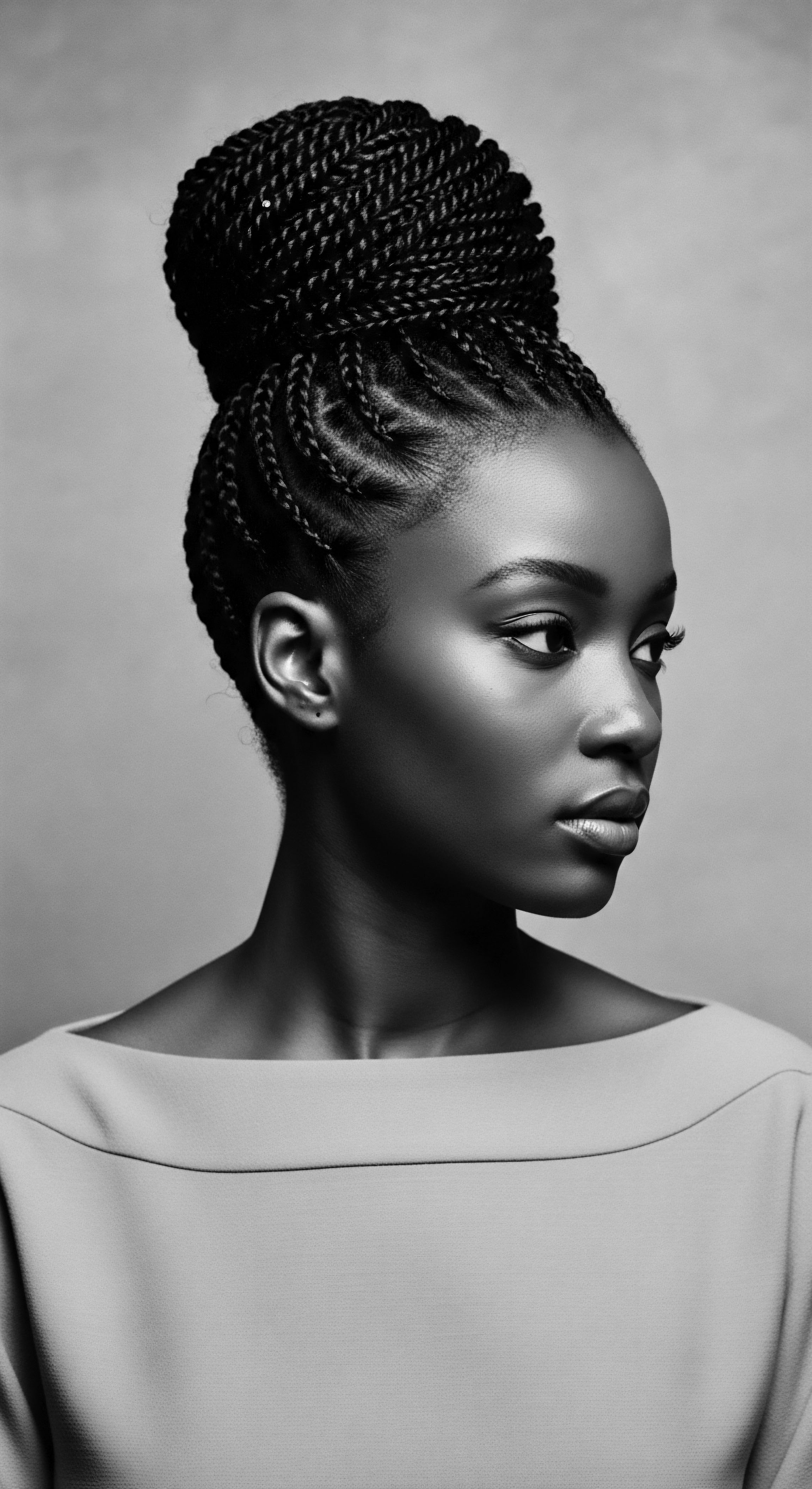
How Does Textured Hair Straightening Connect To Colonial Legacies?
The deep roots of hair straightening within textured hair communities are inextricably linked to the lasting impact of colonialism and slavery. European colonists, in their efforts to dehumanize enslaved Africans, systematically denigrated Afro-textured hair, classifying it as “wool” or “unruly” (Halo Collective, 2024), (Scientific Research Publishing, 2015). This ideological assault laid the groundwork for a beauty hierarchy that privileged features closer to European aesthetics, including straight hair (Halo Collective, 2024).
This historical violence against Afro-textured hair influenced generations, extending beyond the period of chattel slavery into the post-emancipation era and continuing to this day (Leidenanthropologyblog, 2017). The societal message was clear ❉ proximity to whiteness, physically and aesthetically, provided a perceived advantage. The legacy of colorism and texturism, both born during slavery’s brutal caste system, further reinforced this. Lighter-skinned enslaved individuals with looser curls often received better treatment, creating an internalized preference for these traits within the Black community itself (Halo Collective, 2024).
The widespread adoption of straightening techniques can thus be seen as a direct consequence of this racialized beauty standard. It represents an adaptive strategy in a world that consistently devalued Blackness. The products and practices that emerged, from the hot comb to chemical relaxers, served as a means to navigate this hostile landscape, offering a semblance of acceptance and lessening the burden of racial discrimination (Legal Defense Fund, 2023).
The prevalence of textured hair straightening became an adaptive response to systemic racism, offering a pathway to social and economic opportunities often denied to those with natural hair.
Even with the rise of the “Black Is Beautiful” movement in the 1960s, which celebrated natural hair as a symbol of Black pride and resistance, the social pressure to conform persisted (JSTOR Daily, 2019). While the movement encouraged the embrace of Afros and other Afrocentric styles, the deeply ingrained association of straight hair with professionalism continued to impact grooming decisions (JSTOR Daily, 2019). In fact, the perception that straightened hairstyles were professional was reinforced in workplaces where Black women often had to conform to appearance norms established by whites (Oxford Research Encyclopedia of American History, 2017).
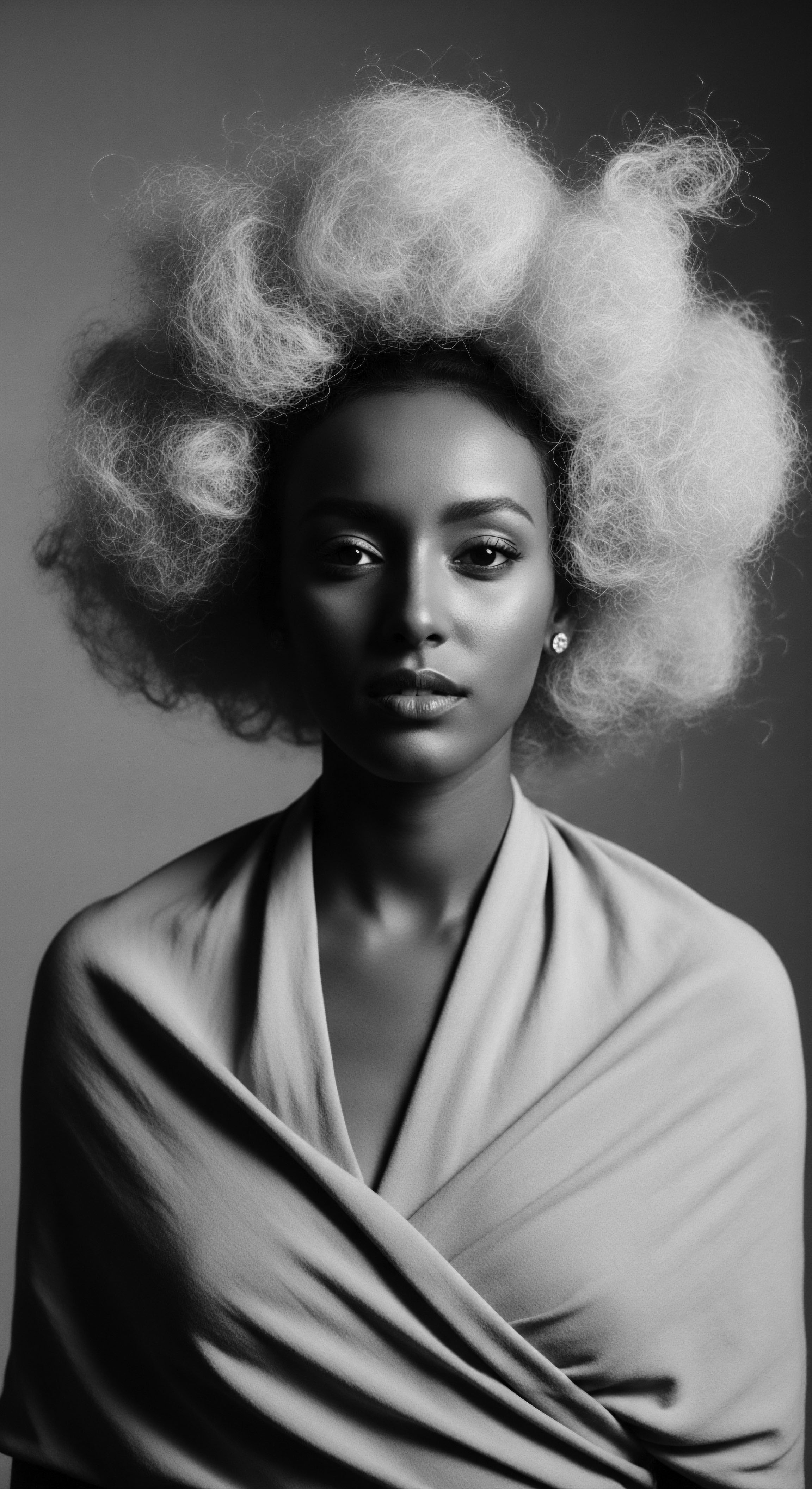
What Are The Health Implications Of Long-Term Straightening Practices?
The long and complex history of chemical straightening products also includes a less visible, yet significant, aspect ❉ their potential health consequences. Early relaxers, often lye-based, were known for causing scalp burns and hair damage (Hair Relaxers, Cancer Risks and Black Women’s Health, 2024). Over time, while formulations aimed to be milder, concerns about the chemicals present in these products have intensified.
Modern scientific investigations have raised significant concerns regarding the long-term use of chemical straighteners, particularly for Black women who have historically used these products more frequently than other racial groups (What Every Dermatologist Must Know About the History of Black Hair, 2023). A 2023 survey study indicated that Black respondents reported the most frequent use of chemical straighteners compared to other races, with 61% stating they used them because they felt “more beautiful with straight hair” (What Every Dermatologist Must Know About the History of Black Hair, 2023).
These products contain various chemicals, including parabens and phthalates, which have been associated with potential health risks (What Every Dermatologist Must Know About the History of Black Hair, 2023). For instance, studies have suggested associations with an increased risk of uterine fibroids, early puberty, and certain cancers (What Every Dermatologist Must Know About the History of Black Hair, 2023), (Hair Relaxers, Cancer Risks and Black Women’s Health, 2024). A particularly poignant statistic from a 2020 Sister Study research, published in The International Journal of Cancer, found a higher breast cancer risk linked to any straightener use, with increased frequency correlating to higher risk (Hair Relaxers, Cancer Risks and Black Women’s Health, 2024).
This highlights a tragic dimension of the historical pressure to straighten, where the pursuit of social acceptance may have inadvertently led to health challenges. (Hair Relaxers, Cancer Risks and Black Women’s Health, 2024).
Understanding these health implications brings a solemn layer to the conversation about textured hair straightening. It underscores the profound cost of conforming to beauty standards that were not only culturally alien but potentially physically harmful. The current movement towards natural hair is a response to this historical burden, seeking not only cultural validation but also physical well-being.
- Sodium Hydroxide (Lye) ❉ A powerful alkaline chemical, historically used in “lye relaxers,” highly effective at breaking down hair bonds but also known for its strong caustic properties, capable of causing scalp burns and skin irritation (Wikipedia, 2023).
- Calcium Hydroxide (No-Lye) ❉ A slightly milder alkaline compound used in “no-lye relaxers,” often combined with guanidine carbonate, reducing the immediate risk of scalp burns but potentially leaving a calcium buildup on the hair (Wikipedia, 2023), (Hair Relaxers, Cancer Risks and Black Women’s Health, 2024).
- Phthalates and Parabens ❉ These are common additives in many cosmetic products, including some hair relaxers, and are under increasing scrutiny for their potential as endocrine disruptors (What Every Dermatologist Must Know About the History of Black Hair, 2023).
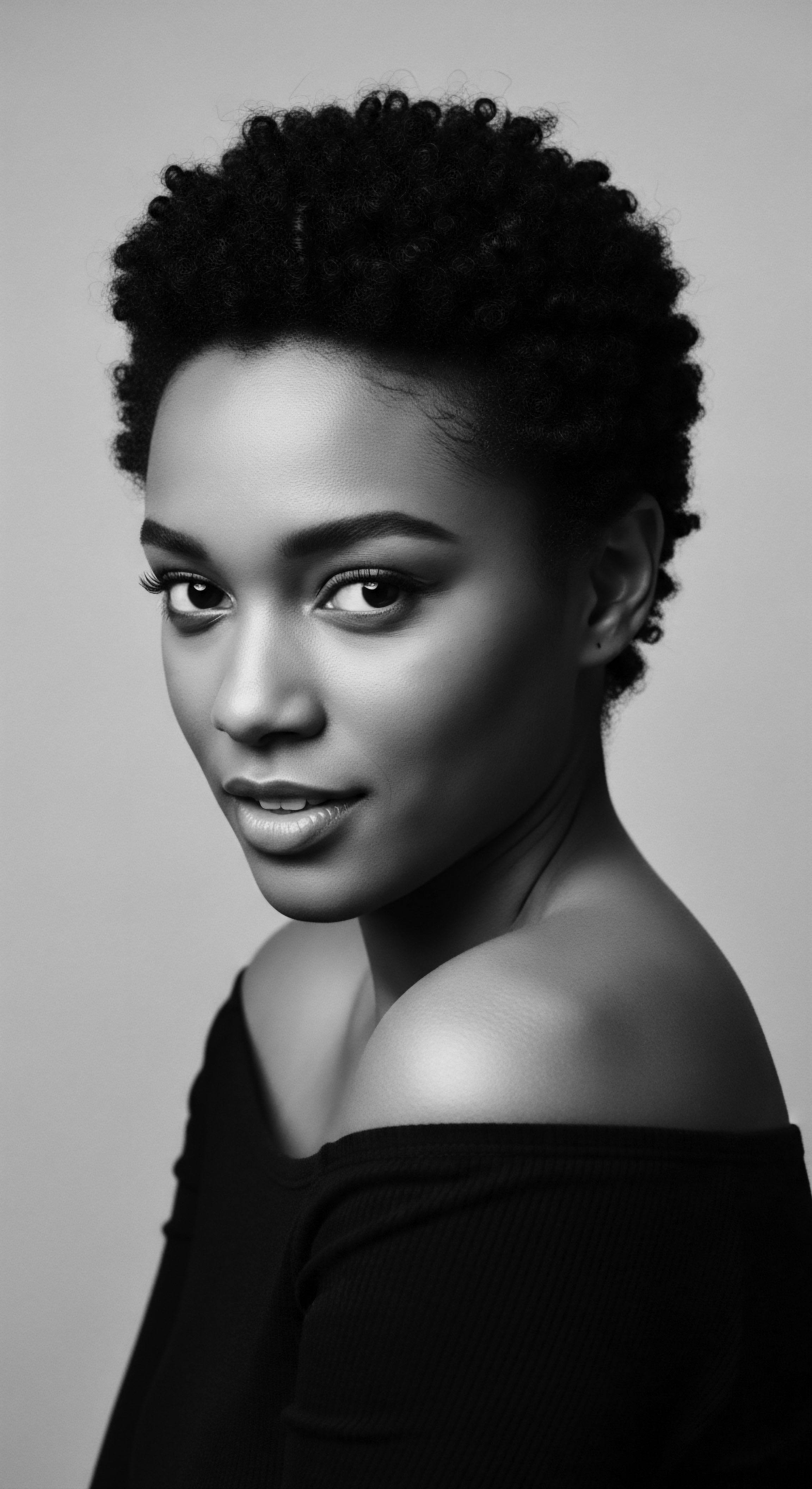
Reflection
The journey of textured hair straightening, from its ancestral roots in pre-colonial African societies to its commonality in contemporary times, speaks to an enduring human spirit. It is a chronicle of adaptation, resilience, and sometimes, profound compromise. For generations, the choice to alter one’s hair texture became a deeply personal act, often intertwined with societal expectations, economic viability, and the very quest for dignity in a world that sought to impose a singular beauty ideal. This history is not about judgment but about comprehension—grasping the intricate forces that shaped individual and communal decisions.
Within the heart of Roothea’s “Soul of a Strand” ethos resides a profound reverence for the living archive that is textured hair. Every coil and wave carries stories, not just of biology, but of vibrant cultural practices, of resistance against erasure, and of unwavering self-expression. Understanding the widespread adoption of straightening allows us to see how communities navigated oppressive landscapes, often leveraging the very industries that perpetuated those standards to build wealth and networks within their own spheres.
The Madam C.J. Walkers and Annie Malone Turnbos, by providing products and education, created pathways to economic autonomy, even as their offerings aligned with dominant beauty norms.
Today, as more individuals reclaim and celebrate their natural textures, the legacy of straightening serves as a powerful reminder of how far we have come and how far we still must go. It calls upon us to recognize the historical burdens many carried, the silent battles fought in front of mirrors and in the workplace. This historical perspective invites us to approach textured hair care not merely as a cosmetic endeavor, but as a continuation of ancestral wisdom, a conscious act of wellness, and a reaffirmation of identity rooted in a rich and vibrant heritage. It is a story still being written, strand by precious strand.
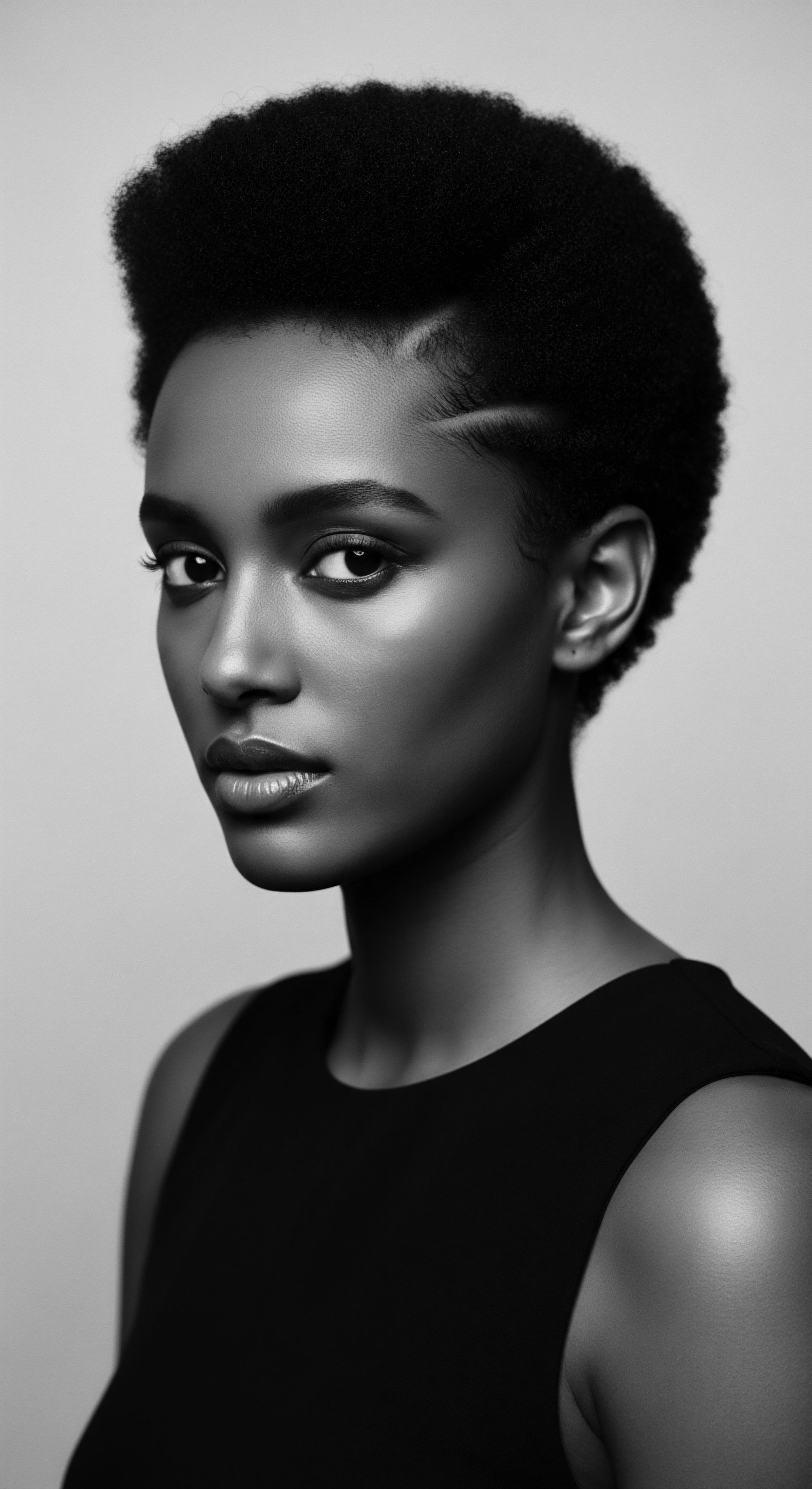
References
- BLAM UK CIC. (2022). “The History of Black Hair.”
- Hair Alteration Practices Amongst Black Women and the Assumption of Self-Hatred. (2016). Chanel Donaldson.
- Halo Collective. (2024). “End Hair Discrimination.”
- JSTOR Daily. (2019). “How Natural Black Hair at Work Became a Civil Rights Issue.”
- Leidenanthropologyblog. (2017). “‘Hairstyle Politics’ ❉ Decolonizing Beauty Standards.”
- Library of Congress. (2022). “Heavy is the Head ❉ Evolution of African Hair in America from the 17th c. to the 20th c.”
- Legal Defense Fund. (2023). “Hair Discrimination FAQ.”
- Noireônaturel. (2023). “The History of Relaxing Frizzy Hair ❉ the Evolution of Hair Standards.”
- Oxford Research Encyclopedia of American History. (2017). “Black Women and Beauty Culture in 20th-Century America.”
- Scientific Research Publishing. (2015). “Rhetoric of Natural Hair ❉ Cultural Contradictions.”
- The Trini Gee. (2023). “Madam CJ Walker & the Hot Comb.”
- TRU-Balance Hair Care. (2025). “Annie Turnbo Malone ❉ Innovator and Educator.”
- What Every Dermatologist Must Know About the History of Black Hair. (2023).
- WhiteLotusHairStudio. (2022). “Black Hair History.”
- Wikipedia. (2023). “Relaxer.”
- Hair Relaxers, Cancer Risks and Black Women’s Health. (2024).
- Assendelft. (2023). “Pre-Colonial African Hairstyles ❉ A Journey Through Time and Culture.”
- Annie Malone and Madam C.J. Walker ❉ Pioneers of the African American Beauty Industry. (2017).
- DHgate. (2023). “The Fascinating History of the Invented Hot Comb.”
- The Commonwealth Times. (2011). “The Oppressive Roots of Hair Relaxer.”
